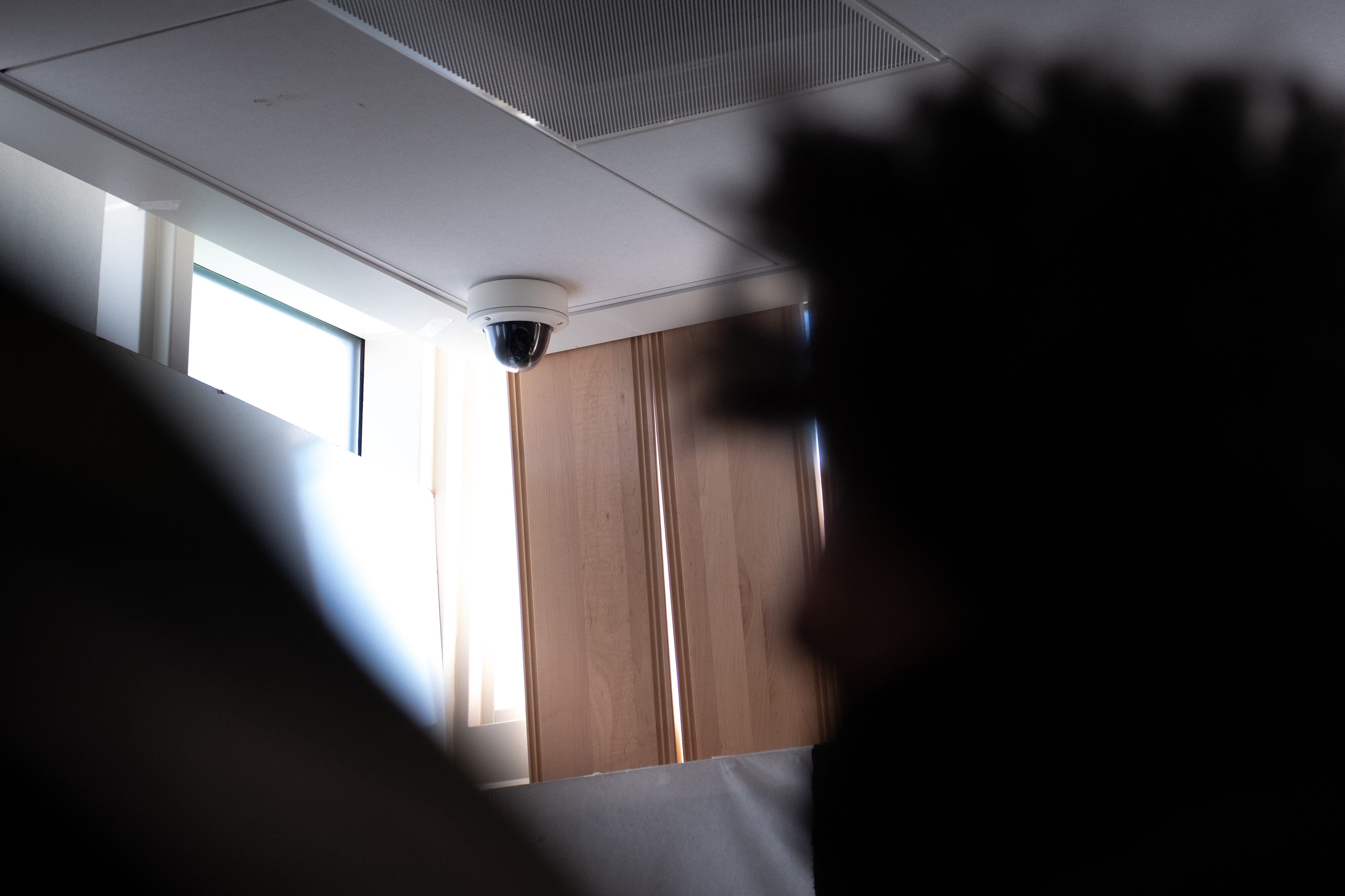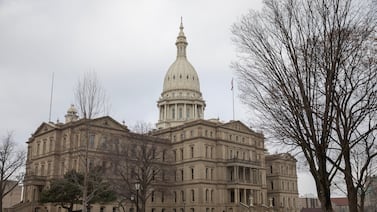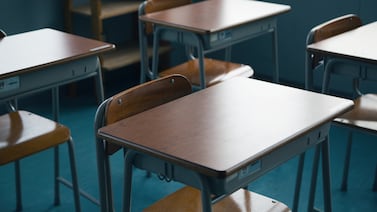Updated to include a statement from the district.
Chicago Public Schools will spend $76.3 million to install new security cameras and replace outdated ones at its elementary and high schools — what the district described as a “bold” three-year plan that will help deter and investigate safety incidents on campus.
District leaders made the announcement at a Wednesday press conference at Eli Whitney Elementary School on the city’s Southwest Side and later discussed it during the monthly school board meeting, arguing that expanded security camera coverage is a top priority for principals.
Five high schools and 58 elementary schools will be the first to receive the camera upgrades this school year. Ultimately, about 430 schools will get the technology — all district campuses that do not have up-to-date camera systems. Officials said they are prioritizing schools based on a number of criteria, including the condition of a school’s existing security cameras, the number of safety incidents on campus, and the prevalence of crime in the neighborhood.
“The biggest beneficiaries are our elementary schools,” CEO Pedro Martinez told board members. “Frankly we minimize the concerns that exist in our elementary schools because there are so many of them.”
But board member Elizabeth Todd-Breland said she was hearing about the security camera initiative for the first time and balked at its price tag of “what feels like a big bet on technologies of surveillance.” She quoted district safety and security chief Jadine Chou saying that forging relationships with students and families is what keeps schools safe.
“I don’t think it has to be either-or,” she said. “I was just caught off-guard.”
A district spokesperson said in a statement that the first projects this school year were awarded to Greatline Electric and Pace Systems, which are pre-approved vendors in a construction projects pool. The remaining security cameras will be installed by vendors from that same pool, the statement said.
“In order to protect student and staff safety, CPS does not release the specific details of our school safety and security plans,” the statement said.
A board presentation on the current district budget mentioned security cameras on a list of capital investments worth $645 million in total.
Martinez said more security camera coverage was “one of the top asks” from the district’s principals, who he said drove the push to add and update that technology.
“The response of principals has been pretty much unanimous that this is one of the best investments we can make,” he said.
He added, “Students understand that this is a deterrent, a way to protect them.”
A recent string of high-profile school shootings, including a deadly attack in Uvalde, Texas, and an uptick in gun violence in Chicago and other cities has trained a starker spotlight in school safety. Some advocates for schools have questioned whether districts are striking the right balance between addressing heightened student mental health needs that have led to an increase in disruptive behaviors — and investing in building upgrades and surveillance technology.
Liz Winfield, a teacher at Juarez High School, where two students were killed and two wounded in a December shooting just outside the building, echoed that sentiment in a public comment to the school board. She said the 1,700-student school is fortunate to have seven counselors and four social workers, but they have struggled to address students’ needs and an increase in behavioral issues in the wake of the tragedy.
“We need care, not cameras, and staff are in crisis,” she said, adding, “This is not the time to do more with less, nor is it the time to surveil or police our students.”
But Martinez stressed that the security camera project is part of a broader strategy to address school safety, including staffing restorative justice and school climate coordinators, the Safe Passage program that helps students get to and from school, and various efforts to address student mental health and social-emotional learning, including hiring additional counselors. Chou described it as a “holistic approach to bolster safety of our schools.”
The district also hired a company last year to monitor student social media posts and flag any that suggest a student might engage in violence or self-harm.
A push to install security cameras at district high schools started in the early 2010s, following the 2009 beating death of a Fenger High School student. Officials said most are now equipped with that technology.
The district said security cameras help school staff respond to incidents fast and capture footage that can serve as evidence in investigations. In large school buildings or campuses made up of multiple buildings such as Whitney’s, the cameras will allow leaner security staff to monitor activities, both inside and outside, district officials said.
“If students do not feel safe in school, the quality of the academic offerings won’t matter,” Martinez told the school board.
Mila Koumpilova is Chalkbeat Chicago’s senior reporter covering Chicago Public Schools. Contact Mila at mkoumpilova@chalkbeat.org.






